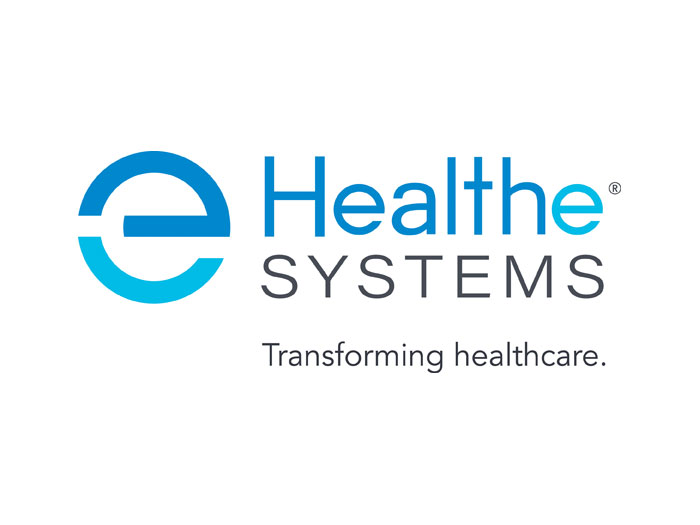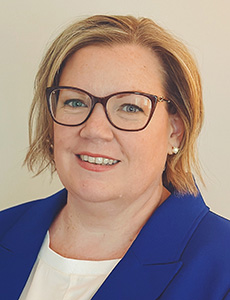A Conversation with Alan Rook of MyMatrixx by Evernorth

In October, Dan Reynolds, editor in chief of Risk & Insurance, caught up with Alan Rook, Senior Clinical Account Executive, MyMatrixx by Evernorth. The discussion centered on presumptive coverage and legislative trends in that area. What follows is a transcript of that discussion, edited for length and clarity.
Risk & Insurance: Thanks for meeting with me, Alan. What is presumptive coverage legislation in the context of workers’ compensation?
Alan Rook: Workers’ compensation coverage for occupational injuries has been expanding since the 1970s. This expansion began with firefighters due to their unique respiratory exposures, but it has grown to include coverage for chronic conditions not typically seen in workers’ comp.
These chronic conditions, more commonly covered by commercial health plans, include cancer, heart and cardiovascular issues, respiratory problems, and mental health conditions. Recent legislative activities attempt to expand the reach of presumptive coverage by adding new conditions − including COVID-19 coverage for healthcare providers – and move beyond traditional work-related accidents.
The fundamental concept of presumption is that it allows easier access to healthcare by reversing the traditional burden of proof. Instead of the employee proving their illness or condition is work-related due to the risks associated with their job, with presumptions, the employer must prove it is not.
This change has effectively simplified access to care for affected workers. It also represents a significant shift in how occupational health claims are processed and approved.
R&I: How widespread is presumptive legislation or coverage across states?
AR: Well, resources catalog the exact numbers differently, but nearly every state has some form of presumptive provision. Just in 2025, 90 presumption bills were introduced that propose additional coverage or include new conditions and new occupations. These are proposed bills, not necessarily laws that have been enacted.
R&I: What is the current landscape of presumptive coverage legislation in workers’ compensation?
AR: I believe this developing trend will continue rather than disappear. Each year, these bills will continue to emerge, and I suspect we’ll gradually see expansion, especially in states with limited indications. The growth will likely come from states expanding their current laws.
R&I: It appears that the current industry trend is shifting in favor of workers’ benefits rather than employers’ interests.
AR: Yes, I do agree. Workers, especially in the public sector, are seeing an expansion of benefits. We also see an expansion of “covered” drugs and drug classes on state mandated formulary drug lists.
R&I: What specific approach does effective pharmacy management require in workers’ compensation cases involving chronic conditions?
AR: Effective management requires a patient-centric approach by a team of clinical professionals to ensure patients receive the right drug at the right time for the right cost. Formulary management and clinical expertise serve as the foundation for proper care. This necessitates a sophisticated formulary management process that maps drugs to specific injuries while providing timely patient access. We want to avoid situations where patients with chronic illnesses face delays at the pharmacy.
Patient access to medical professionals is also crucial for chronic disease management in workers’ compensation cases. These professionals provide essential patient education about conditions, treatment options, and self-management strategies.
Another tool is promoting healthy habits and lifestyle modifications, which requires access to qualified healthcare experts with specialized knowledge across various clinical conditions. A comprehensive team approach enables medical professionals to address patient needs while also educating prescribers through necessary outreach.
The goal is to obtain optimal therapy for each individual patient. This patient-centric approach focuses on addressing specific patient needs while ensuring proper care coordination across all stakeholders.
R&I: What distinguishes chronic conditions from traditional workplace injuries, and how might workplace injuries evolve into chronic conditions?
AR: Traditional workplace injuries typically include slip and falls, strains and sprains, broken bones, burns, and repetitive motion injuries. Within these traditional injuries, proper pain management is still necessary, which can become chronic. This can be just as debilitating and requires the same level of management as other chronic diseases.
What can also happen is the development of secondary conditions. If a patient with pain from a traditional workplace injury isn’t treated appropriately or doesn’t receive proper care, their condition can exacerbate, leading to additional comorbidities similar to chronic care situations. However, disease states can be more complex than pain management when dealing with respiratory or heart conditions, as an example.
R&I: What is the balance between providing necessary care to injured workers and managing costs when comparing traditional workplace injuries to chronic conditions?
AR: Traditional workplace injury management is relatively straightforward. Pain management typically involves just five drug classes that cover the gamut of treatment options. The main concern is continued management.
With presumptive claims, you’re dealing with chronic disease management, which means ongoing care and treatment for the individual’s lifetime. This differs from traditional care, though unique circumstances can arise where ongoing care is needed there as well. The goal becomes improving the patient’s quality of life and preventing complications that can result from improper management of these disease states.
Inadequate management can lead to additional medications, tragic outcomes, and the development of comorbidities. It can result in additional costs and, in worst-case scenarios with conditions like diabetes, even loss of limb or life. The stakes are high in managing these conditions properly.
When you’re effectively managing chronic conditions, you’re essentially reducing the future cost of that claim while improving the patient’s quality of life. You remain focused on patient care, but by doing that effectively, you’re also reducing costs.
R&I:What challenges does polypharmacy present in workers’ compensation cases, particularly when multiple medications might have counteracting effects?
AR: Polypharmacy presents significant challenges in traditional pain management scenarios. When a patient is prescribed an opioid, that medication often has side effects requiring additional treatment, and those treatments can have their own side effects. Before you know it, you have a patient taking ten pills a day, three times a day.
This differs from chronic illness management, where you’re typically dealing with a specific condition. At MyMatrixx by Evernorth, we’re proud to be connected to the largest PBM with systems and networks that allow us to monitor medication interactions for patients with chronic conditions.
A typical scenario involves someone like a police officer who is already receiving cardiovascular medications and then gets hurt on the job. This creates a complex situation where we need to ensure their hypertension is properly managed while also treating their work-related injury.
The challenge becomes ensuring there are no drug-drug interactions or contraindications between their chronic condition medications and their injury treatments. These various scenarios significantly increase the complexity of the claim.
R&I: How does your company manage the challenges of the approximately ninety presumptive coverage bills currently being introduced across different states?
AR: We manage this through our Regulatory Affairs team who monitor legislative developments across all 50 states. We constantly track changes and provide information to our formulary management team for implementation.
We then expand this information into product development, creating a comprehensive approach. It starts with understanding state requirements and assessing our capabilities. From there, we focus on addressing the needs of both patients and clients.
R&I: What strategies should employers and payers implement for managing pharmacy benefits as presumptive coverage requirements expand?
AR: At MyMatrixx, we empower patients, protect clients, and improve outcomes. We take the role of a pharmacy solution provider beyond transactional steps of treating an injury and pain management, instead looking broadly at patient care and disease management. Our approach leads to shorter claim duration, lower time loss, fewer medical services, reduced disease progression, and improved quality of life.
We implement plans targeting chronic conditions by mitigating comorbidities and analyzing data to identify opportunities in pharmacy strategy. Our focus is on specialty care from pharmacists and healthcare experts specifically trained in workers’ compensation and disease-specific clinical expertise. This comprehensive approach effectively manages costs while improving patient outcomes.
We are a pharmacist-centric organization. The president of Express Scripts is a pharmacist, and MyMatrixx has over 20 pharmacists on staff serving various functions. We have dedicated pharmacists for clients providing short and long-term strategies, pharmacists in clinical operations who are disease management experts performing patient and prescriber outreach, and pharmacists leading our product teams.
Being part of Express Scripts, the largest PBM, gives us access to over 98% of specialty drugs, including antineoplastics for cancer care. We leverage their extensive resources and expertise on disease management, drug pipeline analysis, and chronic condition management to develop effective products and processes. I believe our significant investment in medical professionals makes us unique in the marketplace.
R&I: What is the relationship between MyMatrixx and Express Scripts in the workers’ compensation space?
AR: Both MyMatrixx and Express-Scripts are under the Evernorth umbrella. MyMatrixx is the workers’ compensation division, so we deal with the property casualty and workers’ compensation side. Our primary contacts are risk managers.
On the health care and government side, Express Scripts Pharmacy provides PBM services and our teams primarily interface with human resource personnel.
MyMatrixx occupies a unique and integral position within the Evernorth PBM structure. We benefit from the expertise, resources, and innovation the larger entity brings to the table. We combine that with our vast knowledge and expertise in the workers’ compensation industry, which has its own set of challenges and goals.
R&I: What should municipalities or organizations with presumptive exposure in their book of business look for in a pharmacy benefit manager?
AR: What you should be looking for is a pharmacy benefit manager that understands both traditional claims and chronic disease management. You need sophisticated formulary management to ensure the right drug gets to the right patient at the right cost. This is especially important when treating these individuals in a cost-effective way.
Operating efficiencies are equally critical, with automated systems to manage refills, track utilization, flag potential issues, drug-drug interactions, and multiple prescribers. Clinical engagement with prescribers and patients is essential to advise and collaborate on chronic disease management strategies.
Finally, look for personalized support for the injured worker that builds trust and loyalty. This ensures the best possible outcome for both the employee and the employer. These are the key elements to consider when selecting a PBM to help with presumptive coverage.
R&I: How does your organization keep clients informed about emerging medications and legislation like presumptive coverage?
AR: That is a key service we provide. We rely on our Regulatory Affairs team and the office of clinical evaluations within Express Scripts to stay current. For example, for our clients, we conduct regular formulary management reviews to inform clients about current drugs and what’s coming down the pipeline.
A primary resource for this information is our office of clinical evaluations and policies, which provides up-to-date and historical information on all medications. This resource offers clinical evaluations of drugs and recommendations for formulary utilization.
It details valuable information such as duration of use, day supply, and cost-effective therapeutic alternatives. All this information is integrated into our systems and processes, making it accessible when needed.
R&I: How does the pendulum effect manifest in workers’ compensation legislation, where provisions are enacted and later repealed?
AR: COVID-19 is a perfect example of that pendulum effect. During the pandemic, there was a legislative push to expand coverage for essential workers who were deemed necessary for society to function and were being exposed to the virus. However, now we’re seeing that coverage being pulled back, demonstrating how the system can expand and then retract based on need.
R&I: What challenges exist in chronic disease management beyond physician involvement?
AR: Chronic disease management is complicated and that’s why our patient-centric approach can be extremely helpful.
One of the biggest factors in successful chronic disease management is having an informed patient, not just an informed doctor.
Treatment adherence is critical to overall effective care, so patients need to take ownership of their health. That means following our guidance and caregiver guidance throughout their treatment. With our data capabilities, we can identify non-adherence and intervene and outreach, but the fundamental challenge is getting patients to buy into their own healthcare.
This includes following lifestyle modifications and physician directions regarding medication. It’s surprisingly difficult to get patients to adhere to treatment regimens, especially with medications taken multiple times daily or injections. When patients don’t follow prescribed treatments, complications develop, and costs can increase.
As I stated earlier, our goal is to make sure every patient receives optimal therapy for their injury or illness. Our team approach and clinical eye work to address specific patient needs and ensure proper care coordination across all stakeholders. &










